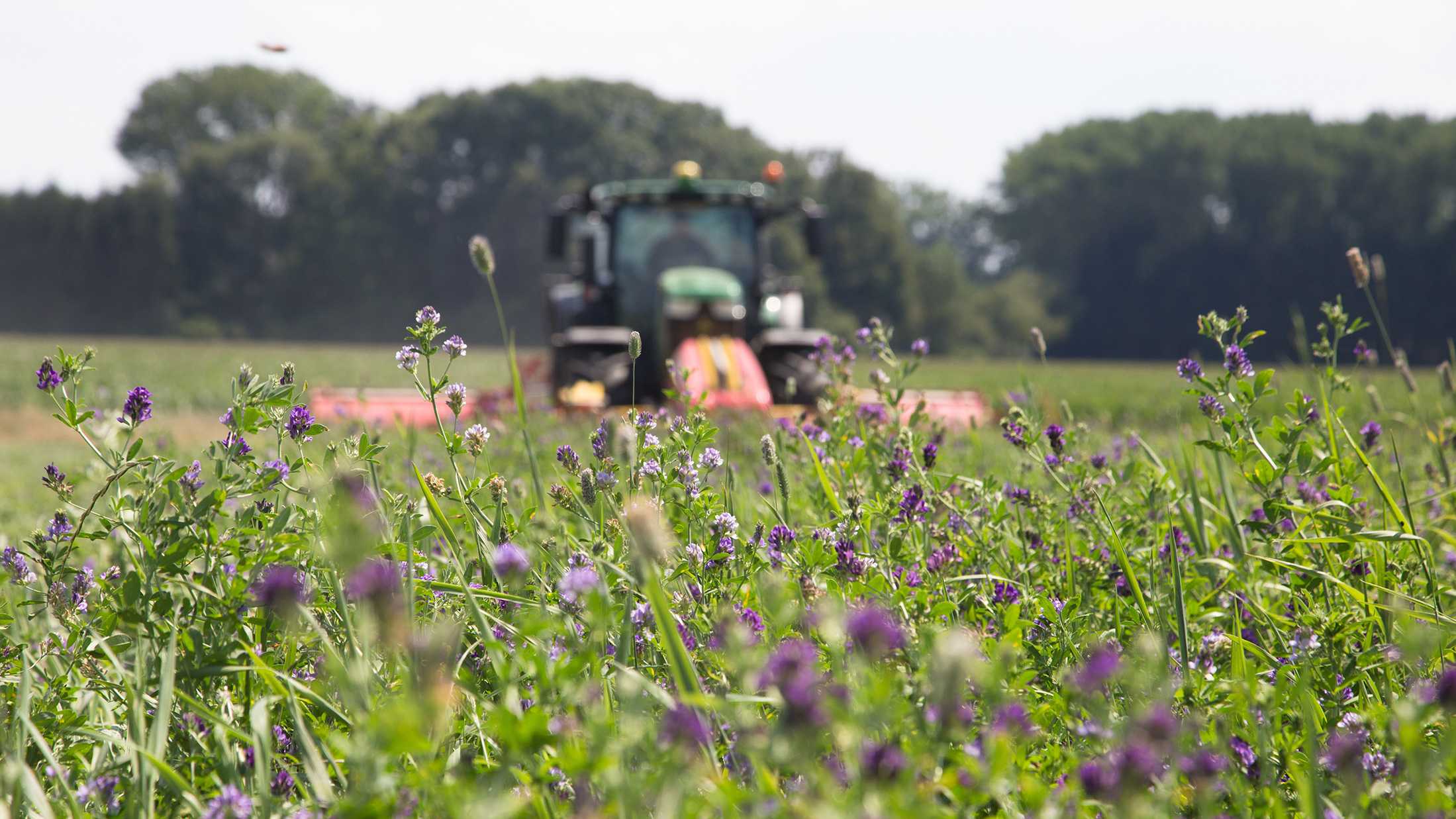A “cultivation battle” for legumes

Achim Walter believes increased cultivation of legumes would bring major benefits. But how to persuade farmers in Switzerland to make the switch?

ETH Professor of Agriculture and later Federal Councillor Friedrich Traugott Wahlen, whose 125th birthday is being celebrated this year, endeavoured to increase the self-sufficiency of Switzerland’s food supply. He became famous for staving off an impending famine during the Second World War with a “cultivation battle”, also known as the Wahlen Plan. The main aim of this plan was to feed more people per hectare of cultivated land and to distribute what little food there was more fairly. To this end, more potatoes and vegetables such as beans were planted instead of animal feed. So where are we now almost 100 years later? This is precisely the question we have explored in a new study.1
Dependent on imports
Switzerland loves its meat and dairy products. The livestock needed to meet this demand is partly dependent on concentrated feed, some of which we produce on our farmland. However, to provide farmers with some predictability in their operations, we have also made ourselves dependent on feed imports from abroad, particularly low-cost soya from countries such as Brazil. The pandemic and other global crises have shown us how vulnerable supply chains can be. This makes the call for a higher degree of self-sufficiency all the more understandable – and the most efficient way to achieve this is to utilise our arable land differently and, in particular, to obtain protein from other sources.
In 2020, around 60 percent of Switzerland’s arable land was used to grow animal feed, while grain legumes – i.e. pulses such as peas, soya or field beans – accounted for only 2.3 percent. Legumes can feed more people per hectare, they are healthier, require less water and space than livestock farming and do not cause any methane problems. To compare: during Wahlen’s lifetime, the Swiss ate 30kg of meat per person per year; today, it’s around 50kg.2 If we ate less meat, livestock numbers would fall. As a result of this reduction, Switzerland could avoid having to import feed, or it could increase its self-sufficiency since more space would be available for growing food for human consumption.
More legumes, less CO2 emissions
A brief aside on greenhouse gas emissions: imports of soya from regions with laxer environmental regulations cause ecological problems, including deforestation and high levels of CO2 emissions. In addition, 85 percent of agricultural greenhouse gas emissions in Switzerland are attributable to livestock farming. This corresponds to around 14 percent of the country’s total emissions. Legumes are clearly the better choice.
Legumes are also good for the soil. They take nitrogen from the air and release it into the earth, which has a positive effect on crop rotation and reduces the need for nitrogen fertilisation. This is of particular interest as excess nitrogen is a problem for Switzerland. In fact, the country needs to cut nitrogen levels by 20 percent between now and 2030. Less animal production would also mean less manure and, in turn, a smaller nitrogen surplus.
Making the transition easy
In view of these clear advantages, the question arises: Why has agriculture held off for so long on increasing its cultivation of legumes? I believe one reason is that Swiss farmers who grow legumes for direct human consumption didn’t start receiving direct payments until January 2023. Furthermore, it remains financially more lucrative to produce meat thanks to something called the “refinement of protein.” Farmers feed cheap grain they grow themselves to their livestock. They then market the meat at a high price. Even if farmers want to move away from this system, they are often carrying heavy debt on their livestock stables and so cannot get out quickly on their own.
“How can we support farmers so that they voluntarily switch to cultivating legumes?”Achim Walter
At present, it would hardly be economically worthwhile for a farmer to produce legumes on a large scale. So how can we support farmers so that they voluntarily make the switch? Agriculture must be actively involved in Switzerland’s efforts to achieve net zero emissions. Let’s face facts: this not only calls for the federal government to change its direct payment and pricing policy, but it also means that we all have to change our consumption habits – in other words, we need to eat more plant-based protein products from Switzerland. Farmers need security and long-term sales channels in order to mitigate the economic risk of a system change. To create these sales channels, we must also establish production facilities and processing chains for plant proteins. Then it will be possible to scale the market successfully: in most cases, it’s not really the bean itself that’s in demand, but the products that come from it. That goes for international markets, too. Perhaps we’ll soon see not only Swiss chocolate made from coffee beans as a successful product on the market but also Swiss plant steaks made from our own legumes.
Better plants and better dialogue
We also need to improve plants by breeding them to be more resilient to climate change. If the plants are resistant to pests, they deliver a more stable yield. And we could also use breeding to increase plants’ nutritional value; for example, by increasing their iron content and thus making legumes even more attractive as a meat substitute.
Why not have an open dialogue with farmers about which farms would be prepared to change systems and under what conditions? The situation calls for transitional periods and step-by-step solutions. Dialogue and compromise are part of the Swiss DNA, and I hope this strength will come to the fore here – in the interests of greater self-sufficiency and ecology.
Beat Keller and Mira Wecker were key contributors to this article.
Celebrating Friedrich Traugott Wahlen’s 125th birthday
ETH Zurich is holding an evening event in honour of Friedrich Traugott Wahlen on 7 March 2024. Several speakers will put Wahlen’s achievements into the context of the major challenges facing our current food system and agricultural production. A short film will shed light on Wahlen’s historic work. ETH agriculture professors will also discuss current agricultural issues in Switzerland together with Eva Reinhard, head of Agroscope.
7 March, 17:15 – 18:45 p.m., Audi Max, ETH Zurich Main Building, Rämistrasse 101, 8092 Zurich
For more information, visit: Pflanzliche Proteine in der Schweiz: Vom 2. Weltkrieg bis heute
Comments
No comments yet